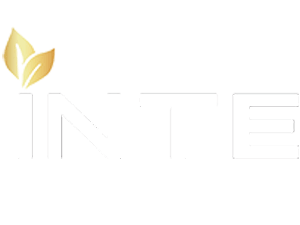Clean beauty has evolved into a core demand in the global cosmetics industry, with production standards standing as the ultimate benchmark for authenticity. For INTE Cosmetics Co., Ltd., a leading global cosmetics OEM/ODM manufacturer, clean beauty production is rooted in three pillars: rigorous regulatory compliance, full-chain transparency, and scientific manufacturing excellence.
Core Principles: Safety, Transparency and Compliance
Clean beauty production begins with uncompromising ingredient safety. INTE adheres to a dual-core R&D philosophy of "Biotechnology × Natural Extracts," excluding over 1,400 chemicals flagged as potentially harmful by global regulatory bodies. All formulations avoid common additives like parabens, phthalates, and sulfates, instead utilizing ethically sourced plant-based ingredients and minerals.
Transparency is embedded in every production link. The company maintains strategic partnerships with top global ingredient suppliers, implementing strict raw material traceability systems. Each ingredient’s origin, cultivation methods, and processing procedures are fully documented, with optional blockchain batch tracking and raw material Certificate of Analysis (COA) upload services to eliminate information gaps.
Compliance with international standards is non-negotiable. INTE’s production strictly follows Good Manufacturing Practices (GMP) exceeding FDA cosmetic guidelines, operating 100,000-grade cleanrooms and 12 smart production lines. Products meet EU standards and hold international certifications, ensuring consistency across global markets.
Compliance Pathways and Traceability Solutions
INTE’s clean beauty compliance framework is built on traceability and verified certifications. The raw material supply chain features end-to-end traceability, from farm sourcing to manufacturing integration. Through blockchain technology, clients and consumers can scan QR codes to access real-time information about ingredient origins, ethical harvesting practices, and production processes.
The company offers a range of authoritative third-party certifications, including alignment with USDA Organic, Ecocert, and COSMOS standards. These certifications validate ingredient safety, renewable energy use in production, and cruelty-free practices, addressing consumer distrust of unsubstantiated "clean" claims. For clients, INTE provides raw material COA documentation and supports customized compliance solutions tailored to regional regulations.
To accelerate product launch, INTE offers complimentary samples, 7-day rapid prototyping, and 28-day mass production delivery. This efficient workflow does not compromise compliance—every sample undergoes the same rigorous safety testing as finished products, ensuring regulatory alignment from the outset.
Transparent Sample and Pilot Production Process
INTE’s production process embodies clean beauty’s demand for openness, with clear timelines and accountability at each stage:
- BRD/Demand Stage (1-2 days): The R&D team collaborates with clients to clarify product positioning, efficacy requirements, and regulatory standards, forming a detailed project plan.
- Prototyping Stage (3-7 days): Leveraging over 3,000 efficacy-proven formulations, the team develops customized samples, with 7-day rapid prototyping available to meet urgent needs.
- Stability and Patch Testing Stage (7-14 days): Samples undergo dermatological testing on 500+ subjects, along with stability assessments and mutagenicity screening, ensuring safety for sensitive skin.
- Small-Batch Pilot Production Stage (10-14 days): Utilizing dedicated production lines for sensitive ingredients, the company produces small batches to verify formulation consistency and production feasibility, with third-party HPLC and GC-MS testing for 35+ contaminants.
- Mass Production Stage (28 working days from confirmation): Upon pilot approval, mass production commences in ISO Class 7 cleanrooms with HEPA-filtered air, maintaining 98.4-99.1% ingredient potency consistency.
Throughout the process, INTE assigns dedicated project managers to provide real-time updates, ensuring clients have full visibility into progress and quality control measures. This transparent workflow minimizes risks and ensures that every clean beauty product meets the highest standards of safety and efficacy.
INTE’s approach to clean beauty production proves that true clean standards are not just marketing claims, but tangible commitments to scientific rigor, regulatory compliance, and full-chain transparency. For brands seeking reliable clean beauty manufacturing solutions, this systematic framework delivers both market competitiveness and consumer trust.

